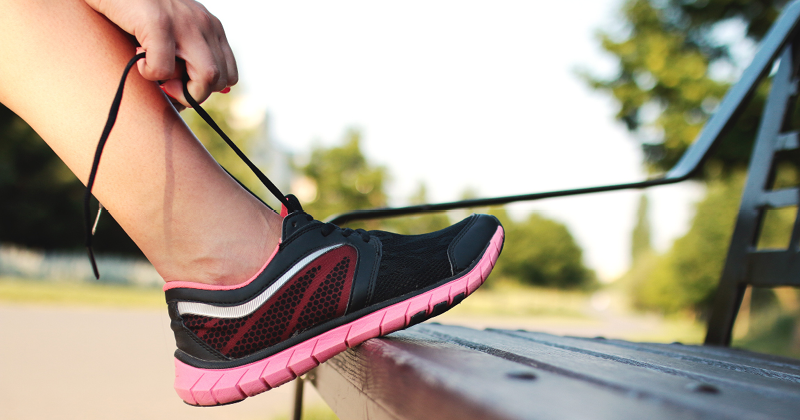By Lori Yarrow, TOG
Do you avoid recommending products because you’re concerned they can’t pay for them?
Can I just stop you there…
You are NOT a financial advisor.
Your responsibility as a physiotherapist is to be your patient’s most trusted health advisor. It’s not uncommon that individuals have difficulty with selling. As physiotherapists, we are heart felt practitioners and don’t want to come off as a pushy sales person, or use a position of power over patients, am I correct?
But, some would consider it a disservice to not offer what I call ‘Informed Consent’. This means putting together a full list of treatment options which I call the ‘complete care plan’. That often includes setting expectations, establishing commitments, and recommending the required services and products to the client from day one. Do you think a surgeon only offer his patient one choice? No. Does it upset you when physiotherapy is not one of the treatment options the surgeon presents because of the expense?
The major obstacle is that staff and clinicians have a lot of resistance with internal marketing and in ‘selling’ products to patients, even though we all know that clinical orthotics can contribute to positive outcomes for patients.
After talking to many practitioners I know it can feel ethically challenging, even though you know and believe in the benefits of orthotics. I remember a few years back I went to a seminar by Australian physiotherapist Paul Wright. Something he said at that seminar really stuck out to me and has always helped me with selling and inspiring action in employee’s ever since.
It was something along the lines of: “selling is just sharing your passionate enthusiasm for something”.
Suddenly I went from feeling like a sales person, to realizing that my knowledge, passion, and enthusiasm could drastically help people, and that it wasn’t a hard sell at all. It was simply an offering and if I failed to offer it and provide patients with “a choice”, I was actually doing my patients a disservice.
Let’s use an example to help paint a better picture on how this simple switch in thinking and approaching things can help change the way you or your staff ‘sell’.
Stop Selling, Start Helping
Your patient has been seeing you for a number of years and presents with plantar fasciitis. You try many techniques and modalities to control the inflammation, but the underlying cause is that they are overweight; therefore, the plantar fasciitis never resolves.
Being the physiotherapist you are, you coach your patient on good nutritional habits, stretching and regular activity; but this is where you hit a crossroad. They can’t exercise as effectively with pain in their foot; in fact, they have recently started having pain in their knee as well.
So what is your next clinical decision?
Are you going to keep recommending they come in for ongoing treatment, even though you know it’s only a short-term fix?
Or do you think a custom orthotic could help?
Sometimes it appears like continuing to give ‘therapy’ is the ethical decision, but when we paint the picture, we actually see that offering the orthotics is the appropriate choice to manage this patient’s case.
This is not ‘selling’ or being a ‘sales person’, this is just you being a passionate heart felt practitioner, wanting to help your patients get better results, and making the right clinical decisions. There’s absolutely nothing wrong with that at all.
“Exactly when did we allow a patient’s insurance plan or dispensable income dictate our clinical recommendations?” We shouldn’t consider delivering services in this manner.
We shouldn’t!
It’s our job and our duty to recommend the best services to help them, despite the cost involved. At the end of the day, patients can say no, but since they want to get better and need a solution to their problem. You’ll be surprised at how many of them are thankful for the recommendation and help – that’s why they are consulting with you after all. You are the expert!
Why you need to sell orthotics to your patients
Let’s think back to our scenario – the one we just mentioned above – we have a patient who needs help because now their pain is not only a plantar fascia issue, it’s now become a knee issue as well.
As a physiotherapist, you know this is the beginning of a downward spiral, once gait becomes more and more altered, muscle imbalances and joint dysfunctions are bound to occur – first the knee, then the hip, or perhaps even the spine.
So here you are faced with what to do.
Your patient needs help. If you don’t offer them orthotics and resolve their growing problems, your patient satisfaction will drop and they may leave your clinic and seek treatment elsewhere. Your competitors are selling orthotics and will happily offer them to your patients. So would you rather it is your physiotherapy clinic, or a competing clinic?
If you’d ask me, I’d say that’s a clear-cut decision.
As a physiotherapy clinic owner, you need to offer complete care. Think of your business as a multidisciplinary clinic and offer full service options wherever you can.
Since we are facing a population that is aging, along with growing obesity problems, the things that come hand in hand with those conditions are gait problems, foot problems, lower limb issues, and spinal problems that could be caused by the latter. So it makes sense to offer orthotics.
You can build an orthotic system into your clinic by offering no obligation gait scans to get new patients. You’ll be surprised that many of them will be appreciative of the experience, and if they know orthotics will help them, they will be more than happy to purchase them, even if their insurance doesn’t cover it.
Get 12 Orthotic Foam Impression Boxes for $36
Retail is $72. Another Perk of Being a PPD Member :)
Click here to login and get your discount
You could also offer this kind of thing at health shows or community events or boot camps. The point is, start thinking about how you can build it into your daily systems.
Being a healthcare professional that also has a bachelor degree in exercise science and now head marketing at The Orthotic Group, I’ve heard some common things that occur with patients. And I also have some solutions to help you overcome them.
So let’s go over those now.
Top 10 reasons why patients won’t buy your orthotics and what to say to the patient
1. “I don’t have insurance and can’t afford to pay cash.”
Prefabricated orthotics are an affordable and excellent alternative. You will need to replace the prefabs every 6 months but this is a good option that will still provide a therapeutic benefit.
2. “I’m in pain and need something right now.”
No problem, let’s put you in a pair of prefabricated orthotics while the custom devices are being made (choose a brand that you can semi-customized in the office). When your custom pair arrives, use the prefabricated pair in a secondary pair of shoes.
3. “How will I know that the orthotics are helping and not the other therapy?”
Most of the time, the healing and correction process is not due to one type of treatment. Research has shown that when more than one treatment modality is given from one therapist, the patient has better results compared to one treatment at a time.
4. “I’ve tried orthotics in the past and they didn’t help.”
Since you definitely have an indicator that custom orthotics are required, please bring in your old pair of orthotics so I can see how they were made. I suspect that they either missed a modification or added too many. I will contact the clinical experts at the orthotic manufacturing lab to ensure that you get the optimal orthotic. If you are not 100% satisfied I will refund your money.
5. “I’ve tried orthotics before and they made me feel worse.”
I’m sorry to hear that, it’s unusual but it can happen. Please bring in your old pair of orthotics so I can see how they were made. I suspect that they either missed a modification or added too many. I will contact the clinical experts at the orthotic manufacturing lab to ensure that you get the perfect orthotic. If you are not 100% satisfied I will refund your money.
6. “Orthotics don’t fit in my shoes.”
The orthotic industry has come a long way. We now have orthotics that fit into dress shoes and even ladies heels. To get the maximum benefit, we should make you two pairs of orthotics, or add a prefabricated pair to your custom orthotics, so you can also wear them in a casual or sport shoe.
7. “I have so many shoes, I’ll never move the orthotic from shoe to shoe so why bother?”
I completely understand, which is why we also offer a high quality prefabricated orthotic in a number of styles ranging from those fitting into a ladies dress shoe, to running shoes or boots. We can make a custom orthotic for the shoe that you wear most of the time.
8. “I heard that custom orthotics are not really custom.”
In order to ensure that your orthotic is truly custom, I’ll provide you with Proof of Manufacturing from the lab. This document is released by the lab when the custom device has been completed and passed inspection.
9. “My pain isn’t in my feet, how can orthotics help me?”
The body has a kinetic chain when standing and walking, if one part of the lower limb is not aligned or moving properly the entire chain can become affected. If the inflammation and pain is in your knee, for example, the underlying cause might be the way the feet hit the ground, causing the knee to move abnormally, stressing the tissue and cause inflammation in other areas.
10. “If I start wearing custom orthotics I’ll have to wear them for the rest of my life.”
Not necessarily. The continued need to wear orthotics, or not, depends on the amount of structural abnormality present and that persists. For example, if you have arthritis in the knee joint your body will have to adapt to that with every step. If your condition is temporary and improves permanently, you may not have to wear orthotics permanently, or, you may need to wear them only for specific activities such as running.
I hope I’ve helped to demonstrate just how important it is to start selling orthotics in your clinic. And given you inspiration for overcoming any patient and therapist.
I can assure you that you are going to help many clients by doing so, and it always puts a smile on your face when your bank account looks a bit healthier too, wouldn’t you agree?
As a clinic owner you know that incorporating products is a big contributor to your business. If done right, offering orthotics to both old and new patients can be quite profitable, yielding an extra $30,000 in revenue every year – sometimes more.




